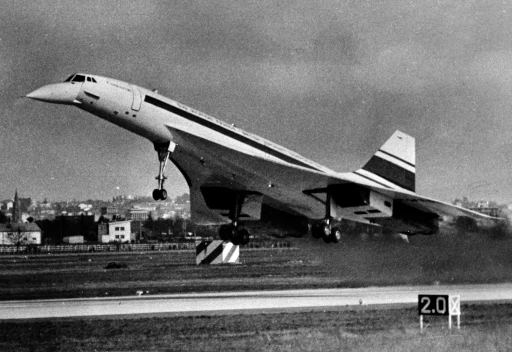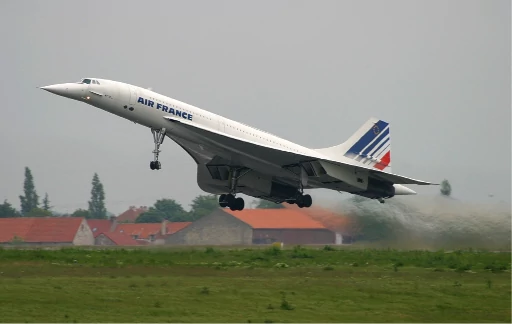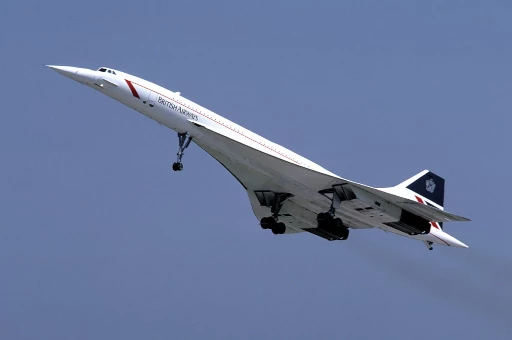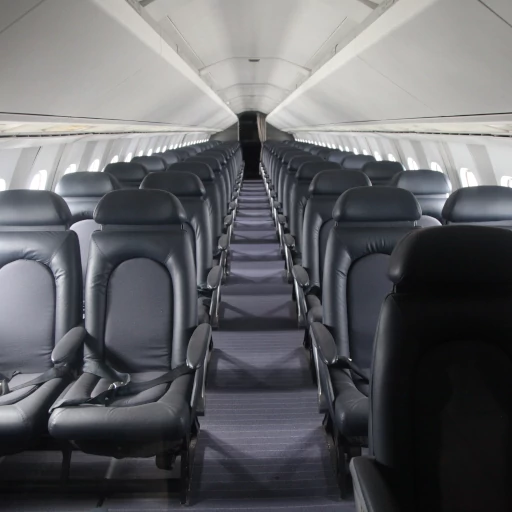Introduction
From 1976 to 2003, general consumers could fly across the Atlantic at supersonic speeds, all thanks to a joint aviation development from the French and British: The Concorde supersonic jet. French company Aérospatiale (then Sud Aviation) and the British Aircraft Corporation (BAC) joined forces in the 1960s to begin crafting a supersonic passenger jet. This concise essay will serve as a brief account of the history of the Concorde and its significance in the late 20th Century.
The Breakthrough That Led To The Development of The Concorde Supersonic Jet
In February 1954, the British Royal Aircraft Establishment (RAE), an aviation research agency, formed a committee to begin researching the idea of accessible supersonic transportation. Their initial studies and reports uncovered three conclusions:
- Flying at supersonic speeds results in a massive amount of drag proportional to the size of the aircraft’s wings. As a result, shorter “trapezoidal” wings were going to be required.
- A passenger aircraft with such a narrow wingspan would require a very long runway for takeoff, and it would land at very high speeds.
- Due to the second conclusion, the aircraft would require impossibly massive engines and unrealistic fuel capacity.
As a result, they did not believe that supersonic transportation would be possible
Not long after, two German aerodynamicists working for the RAE published groundbreaking research and introduced a new “slender delta” wing concept. “Delta wings” are triangle-shaped wings (similar to those seen on fighter jets) and when configured at the right angle, they can produce strong lift. Slender deltas are delta wings such that the “fuselage” edge of the wing runs lengthily along the fuselage. When combined with a properly angled nose cone, an aircraft with slender deltas can produce immense lift at more manageable speeds.
These conceptual developments were cutting-edge and quite literally transformed the entire trajectory of supersonic research.
Several years of joint research and development later, the French and British formally agreed in late 1962 to collaborate on this ambitious project. After years of development and the creation of six prototypes, the first Concorde jet took to the skies for its test flight in 1969. Constructed from lightweight aluminum and capable of reaching speeds of Mach 2.0 (twice the speed of sound!), the jet was propelled by four hefty Rolls Royce turbojet engines and was capable of cruising at 60,000 feet.

Pictured above: The first Concorde test flight in 1969. Notice the way the nose is pointed and also how the wings run across a large portion of the length of the fuselage of the jet. (Source)
The Concorde Enters Service
After several more years of refining the aircraft, it officially entered service in 1976. It was exclusively operated by Air France and British Airways to offer direct flights from Paris and London to Washington D.C. and New York City. With the Concorde available, passengers could pay a premium and travel to and from four of the world’s most influential cities at a fraction of the time. The two airline companies each had a fleet of seven jets, for a total of 14 production airframes.
Due to its high speeds, the jet would frequently break the sound barrier, which would result in very loud and disturbing explosion-like sounds (known as “sonic booms”) that could be heard from the ground. For that reason, it was deemed that the Concorde could only fly at supersonic speeds while over the Atlantic ocean. We can assume that had it not been for this fact, and also for the high cost of production, maintenance, and operation, there may have been more Concorde connections available.

A French Concorde taking off in 2003. (Source)

A British Airliner in flight. (Source)
Conclusion
The Concorde continued to fly from 1976 to 2000. Then, a deadly crash in July 2000 resulted in 113 fatalities in Paris (see here). It was concluded that the jet struck a piece of debris on the runway while taking off at a high speed. This strike resulted in one of the aircraft’s tires exploding. The resulting blow-out caused a fuel tank to be punctured. That started a fire which led to the jet crashing into a building, killing 109 on board and 4 on the ground.
The accident temporarily grounded the entire fleet of Concorde jets, which did not resume service until late 2001. After the accident, and then the September 11th attacks not long after, ticket sales drastically fell. In April of 2003, The French and British airlines unanimously agreed to retire the Concorde. Today you can find the jet on display in a variety of museums around the world.

I personally find this photo of the Concorde’s passenger compartment to be representative of the truly futuristic and luxurious direction that the French and British took air travel for nearly three decades with the Concorde. There’s a 1990s “first class, big-business, London to NYC” vibe here. (Source)
The Concorde supersonic jet stands as a mark of luxury, innovation, and the “business-class” aesthetic of 1980s and 1990s Paris/London/NYC/DC. Truly a marvel of engineering, the Concorde’s legacy, despite being tarnished by the fatal crash, is highly respected in the aviation field. Perhaps one day we may see a similar form of transportation yet again.
